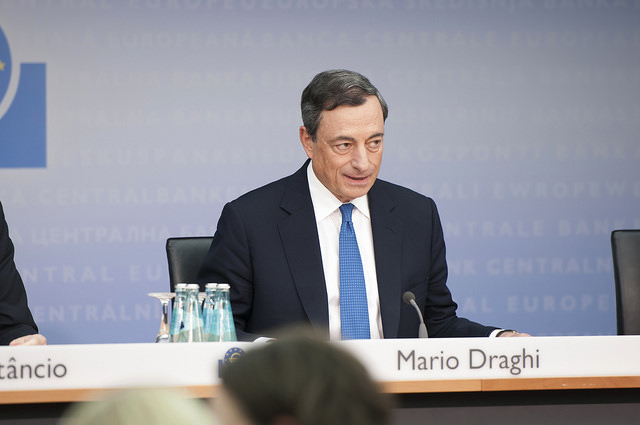Markets have become increasingly volatile this year and seem to be much more driven by investor sentiment rather than economic fundamentals. In the past years, markets have developed an addiction to central bank support and their reaction to changes in monetary policy stances has become unpredictable and often dramatic.
This year we saw a couple of good examples. On August 24, or “Black Monday”, Chinese equity markets dropped nearly 9% in one day followed by the news that China’s central bank was not quickly planning to bail out markets again after already pledging hundreds of billions of dollars for this purpose earlier. Naturally this sent ripples throughout global markets, including Europe and the US. On Black Monday, the Dow Jones dropped 1,000 points at opening, the largest drop ever.
The latest example is from December 3, the day that ECB President Mario Draghi announced additional stimulus measures in order to boost the Eurozone economy and inflation. However, markets had created the image of “Super Mario”, the central banker who has proven to be able to overachieve the market’s already high expectations. In September and October, Draghi had hinted at “QE2”, an extension of the ECB’s bond buying program, partly as an answer to China’s woes potentially threatening the Eurozone economy. Markets had therefore been anticipating a substantial additional stimulus package at the central bank’s December meeting, Draghi’s status in mind. Super Mario however managed to underachieve this time and delivered less than the market consensus had expected. The market reaction therefore was one of declining stock markets, a spike in the euro exchange rate and, most notably, a sharp rise in government bond yields. The yield on the German 10-year Bund rose by as much as 20 basis points in a matter of hours, a rise of almost 50%!
It may be obvious that such a highly volatile environment presents major challenges for investors. We have seen quite some examples now of central banks having difficulties communicating their intentions to the markets. And it is clearly not unlikely that more examples will follow. From a portfolio risk management perspective, these kind of occasions emphasize the importance of a well-informed, unbiased and active asset allocation. Given the substantial volatility spikes as mentioned above, more and more investors choose to delegate their allocation decisions to specialised multi-asset teams.
As we saw ECB easing expectations being priced into the government bond market, we decided to underweight German Bunds in our multi-asset portfolios already in the first part of November. In the weeks that followed, we also took some risk off the table by neutralising our equity and fixed income spread positions. Divergence between ECB and Fed policy is – although well telegraphed to the markets – coming to the surface more clearly now. The announcements from both central banks hitting the markets in December, combined with lower-than-usual market liquidity, was for us reason enough to opt for a relatively light asset allocation stance as we move towards year-end.
Valentijn van Nieuwenhuijzen is Head of Multi-Asset at NN Investment Partners.



 For Fórmate a Fondo
For Fórmate a Fondo
 For Alicia Miguel Serrano
For Alicia Miguel Serrano